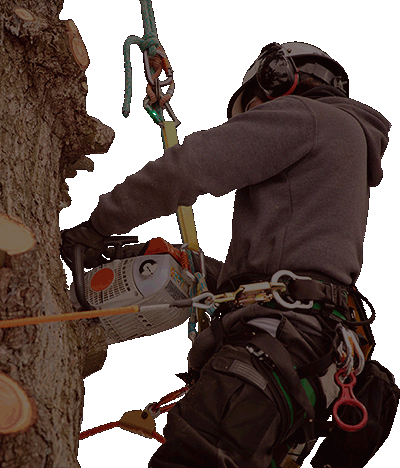
If Spartanburg tree pests, like cankerworms, ravaged your Spartanburg tree leaves this spring, chances are it could happen again.
Right now, cankerworms are about to settle in for the winter. They’re looking for a cozy home, a good place to lay eggs and another all-you-can-eat buffet come spring.
Stop these creepy crawlers before they wreak havoc with Spartanburg tree bands. Find out what Spartanburg tree banding is, how it works and when to set one up.
Tree Bands – Treatment for Worms, Cankerworms, Gypsy Moth or Caterpillars
What are Spartanburg tree bands? How do they stop critters, like cankerworms?
When you wrap a Spartanburg tree trunk in an insulating material covered with a sticky substance, you create a Spartanburg tree band. The band traps cankerworms, gypsy moths and other caterpillars that hike up your tree. Essentially, the pests get stuck on the band and can’t make it to your tree’s canopy to live or do any harm.
When should I apply a Spartanburg tree band?
For cankerworms, wait until most or all your tree’s leaves have fallen so that they won’t get stuck in the band. Generally, applying around Thanksgiving works well. If you’re stopping gypsy moths, add a Spartanburg tree band in late May.
To see if you caught fall cankerworms, check the band in early March. If it’s full, call your arborist again to see if it’s wise to implement Spartanburg tree bands again.
Do all my Spartanburg trees need Spartanburg tree bands?
If your Spartanburg trees are close together, add Spartanburg tree bands to all of them. Otherwise, the pests may be able to travel from one Spartanburg tree to the next. Then, since they’ll likely be traveling from branch to branch or canopy to canopy, the Spartanburg tree bands won’t deter them.






